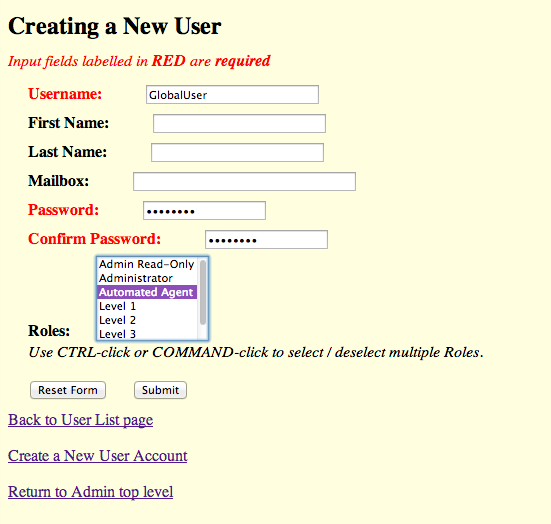Page History
...
In order to avoid unnecessary duplication of data across institutions, increase standardization, and ease as much of the burden of data entry on users as possible we have introduced a new concept of known as Commonly Used Resources. This concept has been internally referenced as 'globals' and this is reflected in the choice of property names. These resources will reside in a central repository , that is maintained by the eagle-i team. All , although all institutions will have read-access to it. We strongly encourage users to select from Commonly Used Resources wherever appropriate when entering data in SWEET.
As of the 2.0-MS1.11 release, only resources that have the following resource types are eligible to be Commonly Used Resources:
Application effect
...
Once the SWEET application has been configured to use Commonly Used Resources, the application will periodically query the Commonly Used Resources data repository for a minimal set (label and URI) of information from the published data. SWEET will then place a local copy of this minimal set of information in its own data repository, in a specialized graph (NG_GlobalProxy). Subsequent uses of SWEET will present selections for the user from this specialized graph as well as the default and published graphs.
...
To start using this feature in your institution's installation, please follow these steps:
- Add Create a new user to the data repository
In order for the SWEET application to locally cache the minimal information about Commonly Used Resources in the institution's data repository, a new user needs to be created that has the ability to add, remove and read theNG_GlobalProxygraph in the institution's data repository. See creating repository users for details on how to create a new user.- Create a new user with a role of
Automated Agent. In this example the username for the new user isGlobalUserand the password isGlobalPw. We will be referring to this new user in other parts of this section.
- Create a new user with a role of
- Edit configuration files
The next step is to edit the configuration files to tell the applications what credentials SWEET should use to cache the Commonly Used Resources data locally, how often should SWEET update its Commonly Used Resources data and where to find the Commonly Used Resources. For this step, we will be editing the configuration files that are located in the eagle-i home directory,${EAGLE_I_HOME}, in theconfdirectory and in the.configdirectory.eagle-i-apps-credentials.properties
To let the SWEET and Institutional Search Installation and Upgrade Guideapplication know the credentials for this new user, a new set of properties needs to be added to the credentialed property file. This file is located in the.configdirectory of the${EAGLE_I_HOME} directory, i.e./opt/eaglei/.config/eagle-i-apps-credentials.properties.
Add the following lines to theeagle-i-apps-credentials.propertiesfile:Code Block # GLOBAL SERVICE eaglei.datatools.globals.user=GlobalUser eaglei.datatools.globals.password=GlobalPw
Please substitute the username and password that you have created for the example ones.eagle-i-apps.properties
This file is located in theconfdirectory of the${EAGLE_I_HOME} direcory, i.e./opt/eaglei/conf/eagle-i-apps.properties.- To let the applications know to use Commonly Used Resources data repository, where that repository is and how often SWEET should update it's
NG_GlobalProxywith data from Commonly Used Resources repository.
Add the following lines to theeagle-i-apps.propertiesfile:Code Block ## -- GLOBALS -- # True if datatools needs to reach out to a global repository; Default is FALSE. # NB: If setting this to true, be sure to add the other properties that are needed # for configuring the global repository communication eaglei.datatools.uses.globals=true # the URL where the global data repository resides eaglei.datatools.globalRepository.url=https://global.dev.eagle-i.net:8443Activation
- To let the applications know to use Commonly Used Resources data repository, where that repository is and how often SWEET should update it's
To activate this feature, the following must take place:
...
